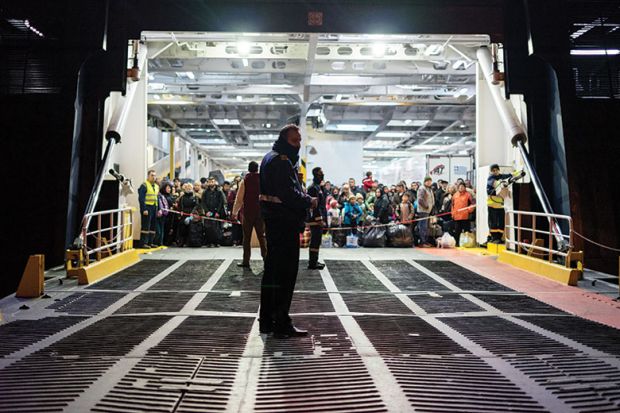Migration is not a “problem”, with the implication that there are possible solutions. It is a phenomenon inherent to the human experience. This is the main theme of Peter Gatrell’s rich and empathetic survey of Europe’s experience with migration since 1945. Drawing on a wide range of sources, he takes us inside the faceless crowds of migrants to hear the individual voices of struggle, tragedy and (less often) triumph. Stories such as that of the dignified Chinese man in a London cancer clinic, who heard his doctor out and only then wrote down the word “terminal” so that he could look it up later – bringing home the fact that, even once resettlement has been achieved, the process of adjustment is lifelong.
The other virtue of this book is the synoptic view it provides of comings and goings in Europe over more than half a century, putting the febrile contemporary debate into context. Both the upheaval of the late 1940s and the boom years of growth that followed led to mass flows (of labour and refugees) across frontiers, restricted only by the Iron Curtain. Inside the Soviet Union itself, much internal migration took place under central planning. The eventual collapse of communism opened up new channels, notably within Germany and the wider European Union, just as the Balkan wars were producing a tide of refugees heading north. The pressures unleashed by the Arab Spring in 2011 are thus only the latest of the migration “crises” that have confronted Europe over the years. In any case, migration is not just about visible mobility. It involves the slow process of integrating migrants and “post-migrants” (that is, subsequent generations), requiring change on all sides.
One key difference now, however, is that migration has become a foreign policy issue for the EU and its member states. The latter part of the book recounts their failures on both internal and external fronts, but sidesteps the causes, simply musing on whether “the door to Europe remains open or is closed”. This is a false question – not least because national capitals make the decisions on entrants from third countries and take varying approaches. More important, low birth rates require immigration for economic reasons, while liberal values (if they last) will insist on welcoming some refugees from war and oppression. The only issues concern how wide the doors should open, and for whom.
Yet even these questions are too rhetorical. More practically: is the Dublin Regulation, by which the first state where a refugee arrives becomes responsible for an asylum claim, now obsolete? Can “front-line states” such as Greece, Italy, Spain and Poland be left to absorb irregular arrivals when most newcomers clearly wish to settle elsewhere – notably in Germany, the UK, Sweden and the Netherlands? What is the appropriate balance to be struck between deterrence and realpolitik deals with countries such as Turkey on the one hand, and creating channels for regular migration on the other?
It would be unfair to expect detailed analysis of these problems in a deeply researched historical work that provides a new and indispensable perspective. But if our policymakers continue to muddle through without addressing them, the result will be further pain for migrants and more fracture lines in Europe’s civil societies.
Christopher Hill is emeritus professor of international relations at the University of Cambridge. His latest book is The Future of British Foreign Policy (2019).
The Unsettling of Europe: The Great Migration, 1945 to the Present
By Peter Gatrell
Allen Lane, 576pp, £30.00
ISBN 9780241290453
Published 29 August 2019
后记
Print headline: The migrants are always with us


